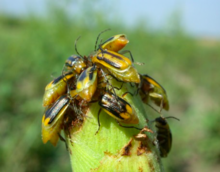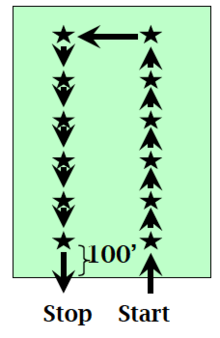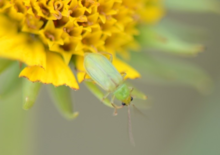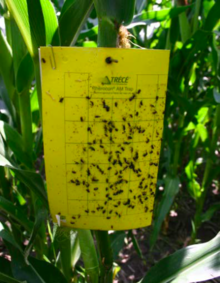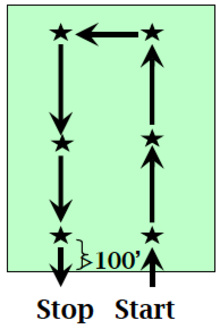With the introduction rootworm-resistant Bt corn (Bt-RW corn), growers could simplify management by focusing on corn hybrids and insecticides, rather than field-by-field corn rootworm scouting. Because the Bt-RW trait was initially so effective, growers could ignore corn rootworms and drop scouting.
However, when western corn rootworm and more recently, northern corn rootworm, developed resistance to Bt-RW corn, it changed the game. Bt resistance added risk and the need to bring management skills back into corn production. Unfortunately, many crop producers don’t know their fields’ corn rootworm status, if they have Bt resistance and what management they’d need.
On this webpage, we’ll describe the factors affecting corn rootworm populations, two methods for scouting for them and how to decipher what these counts mean for your fields.
Why scout
By scouting for corn rootworm, crop producers can strategically reduce input costs while avoiding unacceptable rootworm risk.
Scouting rootworms provides critical information on population status, prospective injury threat and Bt resistance. In addition, it generates much-needed information for management decisions, answering critical questions such as:
-
Do I need to manage corn rootworm?
-
Do I need Bt traits?
-
Is Bt resistance developing?
-
Should I switch traits? Add a soil insecticide? Control adult beetles? Rotate crops?
Five reasons to scout
- Corn rootworm populations vary greatly from field to field.
- Heavy corn rootworm pressure can challenge performance of all management tactics.
- Scouting tailors management inputs to corn rootworm risk, eliminates unnecessary inputs and removes uncertainties.
- Scouting slows the development of resistance to Bt-RW traits and soil insecticides, when crop producers use these inputs as needed.
- Crop producers can detect beetle immigration into late-silking fields, and adapt management practices to the increased threat.
Understanding corn rootworm
Factors driving interest in corn rootworm
Bt resistance isn’t the only factor that drives interest in rootworm populations. Interest in management alternatives, such as planting conventional corn and using soil insecticides, increases when:
-
Corn prices are lower. When corn economics change, many growers debate how to smartly reduce inputs.
-
Western corn rootworm populations drop when overwintering eggs die (overwinter mortality).
-
Northern corn rootworm populations suddenly increase.
Factors affecting infestations
Bt-trait resistance and weather (winter mortality, spring rainfall) increases field-to-field variability. In addition, how well corn rootworm management tactics will perform varies with population pressure.
Research has confirmed western corn rootworm resistance to all Bt traits—most notably, VT Triple and Triple Pro, Agrisure 300GT and 3111. Apparent cross-resistance between these traits further complicates trait rotation decisions.
Even as seed companies phase out single-trait hybrids, performance problems with pyramids of Bt-RW traits continued to increase.
More recently, northern corn rootworm populations resistant to multiple traits have been observed in North Dakota and Minnesota.
Corn rootworm populations may decline for two reasons:
-
Winter mortality of less-hardy western corn rootworm eggs can occur in severe, open winters. Notable collapses of western corn rootworm occurred during the winters of 1977-78 and 2013-14.
-
Repetitive heavy rainfall in the spring and early summer may drown young larvae.
Weather-related mortality masks ongoing Bt resistance, which will become evident as favorable conditions return.
How do you know what’s in your field? Use one of the two following scouting techniques.
How to scout for corn rootworm
Whole plant count scouting technique
When to scout
-
Begin scouting about two weeks after beetle emergence begins. Peak beetle emergence typically coincides with the onset of silking. The best period to scout is usually first three weeks of August.
-
Scout weekly until silks have dried.
-
Scout from mid-morning, when dew evaporates, until approximately 2 p.m. This is the best time because beetles will be actively feeding or mating at this time.
Where to scout
-
Avoid plant counts within 100 feet of the field edge. Beetle movement, either into or out of the field occurs at the field edge.
-
Sample two plants at 12 locations spread throughout the field. Move at least two paces away to count the next plant at a location, and walk at least 50 paces between locations.
How to scout
-
Approach the plant cautiously. Beetles are skittish. Be careful not to disturb them as you manipulate leaves. Beetles may be found anywhere on the plant, but prefer silks and pollen. When moist green silks are present, cover the ear tip to prevent beetles from escaping.
-
Count from the bottom of the plant upwards. Beetles tend to drop when disturbed.
-
Examine leaf surfaces (bottom and top). Then, bend the leaf down to count beetles in the leaf axil and under the leaf sheath.
-
Gently open the ear tip and tap the ear with the lower hand under the ear tip. Count the beetles disentangling themselves from silks and dropping out of the ear onto your hand.
-
Record your data and move to the next plant. For management purposes, northern and western corn rootworms are considered equivalent.
Silk clipping
Pollination problems occur if silks are kept pruned (less than .5 inch exposed). Treat if beetles are abundant (more than seven to eight per ear), and silk clipping reaches this level early in pollination. Once pollinated, there’s no concern about silk clipping.
Controlling egg laying
Increase scouting frequency to two times per week. Initiate control when densities exceed one beetle per plant and 10 percent of females have eggs. Re-spray whenever densities exceed this threshold.
Hybrid and soil insecticide decisions
Bt hybrids, soil insecticide or crop rotation are advised when beetle density exceeds 0.75 to 1.0 beetle per plant in corn-after-corn and 4.5 in rotated corn (extended diapause).
Note: These thresholds are based on 1980s production practices and prices. No action thresholds have been developed for Bt-RW corn, switching from pyramided traits or determining if you need overlays of soil insecticides.
Yellow sticky trap scouting technique
Sources of sticky traps
Yellow sticky traps are available in a variety of sizes, adhesives and colors. Each factor affects corn rootworm captures.
Most research has used unbaited Pherocon AM traps but MultiGard traps are an effective option. Sources include:
- Great Lakes IPM (989-268-5693).
- Gempler’s (800-382-8473).
- Trece, Inc. ($250 minimum; 866-785-1313).
Equipment needed
- Sticky traps (six Pherocon AM unbaited sticky traps or eight MultiGard sticky traps). Write the date and trap location on the back of the trap to indicate when and where you put it in the field.
- Six or eight twist ties (one per trap).
- Six or eight paper clips (one per trap).
- Permanent marker.
- A 1-gallon plastic zip bag.
- Citrus-based solvent and paper towel (optional). The adhesive is very sticky and can create a mess if you get it on your hands, clothes or even your hair. You may want to bring a citrus-based solvent and paper towel to remove the sticky adhesive.
When to scout
-
Begin scouting about two weeks after beetle emergence begins. Peak beetle emergence typically coincides with the onset of silking. The best period to scout is usually first three weeks of August.
-
Scout weekly until silks dry.
Where to scout
-
Plan how you’ll spread the traps throughout the field. A U-shaped pattern provides an entrance and exit point on the same side of the field.
-
Avoid putting traps within 100 feet of the field’s edge. Beetle movement, either into or out of the field, occurs at the field edge.
-
Mark key points so you can find the traps again. Mark where you enter the field, and just before the traps as you walk down the row. It’s amazing how easy it is to miss a trap.
How to scout
- Wrap the trap around the stalk. First, strip off the ear and ear leaf. Wrap a twist tie around the stalk of a higher leaf so the trap will hang at ear height. Open the trap and wrap it around the stalk, sticky surface outward. Push twist ties through upper holes on each side of the trap. Push the lower tab through the other side of the trap to complete installation. Clear interfering leaves from adjacent plants.
- Install the remaining traps, moving at least 100 feet between trap locations.
- Create a clearly visible path when crossing rows so you can find the other leg of the U.
- Retrieve the traps after approximately one week. Fold sticky traps closed and place them in a plastic bag. Be sure to mark the date you removed the trap. Replace with another trap for one more week.
- Retreat from the field into the shade or air-conditioned vehicle or house to count the corn rootworm beetles. Note that wings tend to separate from the body, so you may need to match them to get an accurate count. If you want to count the traps later, just store them in the fridge or freezer. Thaw or warm the traps before counting so the adhesive will soften.
Minnesota research in the mid-1980s determined a threshold of 3.8 beetles per trap per day on a Pherocon AM trap (equivalent to 9.6 beetles per trap per day on a MultiGard sticky trap) predicted economic injury to refuge hybrids in corn after corn.
Unfortunately, this threshold hasn’t been updated for current economic and production realities. Thresholds for predicting economic injury in Bt-RW corn have not yet been developed.
Reviewed in 2022




